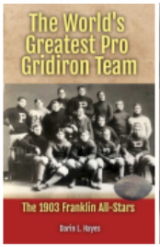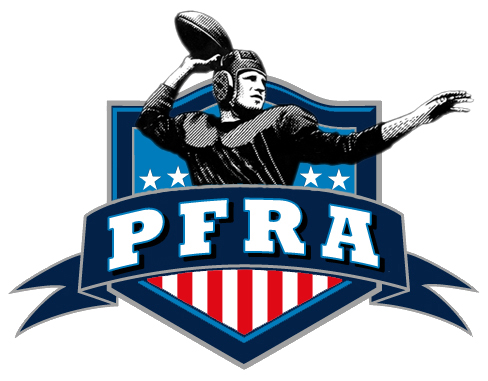The Utah Utes football program has won 25 conference championships in five conferences during their history thus far. Of course, the Utah Utes gridiron team represents the University of Utah in the Pac-12 Conference of the Football Bowl Subdivision (FBS) of NCAA Division I play. The program first started on the gridiron in 1892, and they have been a mainstay activity on campus pretty steadily since. The team has been known to be trend setters, too, breaking barriers and making history. The Utes were the first team from a conference without an automatic bid to play in a Bowl Championship Series bowl game. They were colloquially known as being a BCS Buster and the first BCS Buster to play in a second BCS Bowl. Coaching legends have once stormed the sidelines, like Jim Fassel from 1985 to 1989, Urban Meyer during the 2003–2004 seasons, and Bill Meek, who coached from 1968 to 1973. Players such as Ty Jordan, Aaron Lowe, Mac Speedie, George Seifert, Bob Trumpy, Dave Costa, Del Popcorn Rodgers, Scott Mitchell, Jamaal Anderson, Kevin Dyson, Steve Smith, Paul Kruger, and more have donned the Utes uniform. The program has had some great players and legendary coaches, so please enjoy this collection to reflect on the Utah Utes!
Football History
Utah Utes Football Tradition
The 1922 Rose Bowl
Celebrate 2 of the top Gridiron Coaches in history in the latest Pigskin Dispatch book When Greasy Met the Wonder Coach
Greatest Pro Team
Who was the MOST DOMINANT team in Pro Football History? We have the answer in the latest Pigskin Dispatch book The World's Greatest Pro Gridiron Team
FREE Daily Sports History
You are only seconds away from receiving the Pigpen's Newsletter everyday filled with new items
SUBSCRIBE BY CLICKING
_________________________
Utah Utes Helmet Design History
The Utah Utes football program has a rich history, reflected in the evolution of their iconic helmets. Originally, the Utes wore simple white helmets with a red stripe down the center. This design remained largely unchanged for decades, symbolizing the team's tradition and identity.
In the 1960s, the Utes introduced a more striking design, featuring a chrome helmet with a red stripe and the interlocking "UU" logo. This design became synonymous with the program and is still recognized today as a classic. However, the Utes have periodically experimented with variations, including matte finishes, different logo placements, and even alternate color schemes.
While the Utes have occasionally strayed from their traditional look, they have always returned to their roots. The interlocking "UU" logo and red and white color scheme remain essential elements of their identity. These iconic features not only represent the team's history but also connect them to their passionate fan base.
In the 1960s, the Utes introduced a more striking design, featuring a chrome helmet with a red stripe and the interlocking "UU" logo. This design became synonymous with the program and is still recognized today as a classic. However, the Utes have periodically experimented with variations, including matte finishes, different logo placements, and even alternate color schemes.
While the Utes have occasionally strayed from their traditional look, they have always returned to their roots. The interlocking "UU" logo and red and white color scheme remain essential elements of their identity. These iconic features not only represent the team's history but also connect them to their passionate fan base.
Mac Speedie Cleveland Browns HOF End
Mac Speedie, a name lost to the mists of football history, deserves a moment under the Friday night lights. Born in 1920 in rural Illinois, Speedie overcame a childhood disability to become a dominant wide receiver in the early days of the NFL. His story is of athletic prowess, defying stereotypes, and leaving an indelible mark on the game he loved.
Speedie's early life was shaped by hardship. Struck by Perthes disease, a bone deficiency, he was initially told he might never walk again. However, fueled by an unwavering determination, Speedie recovered and excelled in athletics. He became a star sprinter in high school and at the University of Utah, even showcasing his talents on the basketball court and football field.
Despite doubts about his size and injury history, Speedie was drafted by the Detroit Lions in 1942. However, World War II intervened, and his professional career began not in the Motor City but with the Cleveland Browns of the upstart All-America Football Conference (AAFC).
It was with the Browns that Speedie's legend truly blossomed. Despite playing opposite Otto Graham, one of the greatest quarterbacks ever, Speedie became the AAFC's all-time leader in receptions and receiving yards. His deceptive routes, exceptional catching ability, and surprising speed earned him the nickname "The Flea" and made him a nightmare for opposing defenses.
When the AAFC merged with the NFL in 1950, Speedie proved he could compete against the established stars of the league. He led the Browns to the NFL Championship in 1950 and continued to dominate throughout the decade, earning All-Pro honors on multiple occasions.
Speedie's career ended in 1952 after a knee injury forced him into early retirement. He left behind a legacy of broken records, highlight-reel catches, and a reputation as one of the most complete receivers of his era.
Speedie's early life was shaped by hardship. Struck by Perthes disease, a bone deficiency, he was initially told he might never walk again. However, fueled by an unwavering determination, Speedie recovered and excelled in athletics. He became a star sprinter in high school and at the University of Utah, even showcasing his talents on the basketball court and football field.
Despite doubts about his size and injury history, Speedie was drafted by the Detroit Lions in 1942. However, World War II intervened, and his professional career began not in the Motor City but with the Cleveland Browns of the upstart All-America Football Conference (AAFC).
It was with the Browns that Speedie's legend truly blossomed. Despite playing opposite Otto Graham, one of the greatest quarterbacks ever, Speedie became the AAFC's all-time leader in receptions and receiving yards. His deceptive routes, exceptional catching ability, and surprising speed earned him the nickname "The Flea" and made him a nightmare for opposing defenses.
When the AAFC merged with the NFL in 1950, Speedie proved he could compete against the established stars of the league. He led the Browns to the NFL Championship in 1950 and continued to dominate throughout the decade, earning All-Pro honors on multiple occasions.
Speedie's career ended in 1952 after a knee injury forced him into early retirement. He left behind a legacy of broken records, highlight-reel catches, and a reputation as one of the most complete receivers of his era.
Fred Gehrke
Born April 24, 1918, was a legendary football player and executive Fred Gehrke. Fred was on the Cleveland Rams team that won the NFL Championship in 1945. Fred Gehrke went to college and suited up for the Utah Utes and also went on and played in the NFL for the Cleveland / Los Angeles Rams, San Francisco 49ers and Chicago Cardinals from 1940 through 1950.
Fred started a trend that we can appreciate today.To boost team morale, Gehrke designed and painted the Los Angeles Rams logo in 1948, which was the first painted on the helmets of an NFL team.
-Frequently Asked Question
-Who was the first to paint a logo on a helmet? The answer in the pro game is Fred Gehrke of the Rams in 1948, check out more about it in the story: First Helmet Logo.
Fred started a trend that we can appreciate today.To boost team morale, Gehrke designed and painted the Los Angeles Rams logo in 1948, which was the first painted on the helmets of an NFL team.
-Frequently Asked Question
-Who was the first to paint a logo on a helmet? The answer in the pro game is Fred Gehrke of the Rams in 1948, check out more about it in the story: First Helmet Logo.
Related Searches
Sports:football, NFL Jersey:Number 58, NFL Jersey:Number 88, sports:football, helmet logo, NFL Jersey:Number 18Orville Mulligan: Sports Writer
We invite you to take a ride through 1920's sports history in the audio drama that takes the listener through the sounds and legendary events of the era through the eyes of a young newspaper journalist. You will feel like you were there!
Brought to you by Number 80 Productions and Pigskin Dispatch
_________________________
Proud to Support The Professional Football Researchers Association
To learn more about joining the fun in preserving football history go to The Official PFRA Website.
_________________________
We have placed some product links on this page. If you purchase by clicking on them, we will get a commission to use to help with operating costs.
Sports Jersey Dispatch
If you like remembering players of the NFL by their numbers then you may also enjoy going uniform number by number in other team sports as well. We have it for you on our other website in baseball, basketball, hockey and more on the Sports Jersey Dispatch.
_________________________
Gridiron Legacy: Pro Football's Missing Origin Story
Author Gregg Ficery tells the story of the beginnings of Pro Football through the pro football career of his Great Grandfather, Bob Shiring
_________________________
Sports History Network
A Proud Partner in the Headquarters of Sports Yesteryear, SHN.
_________________________
Bears versus Cardinals: The NFL's Oldest Rivalry
Author Joe Ziemba the master historian of football in Chicago has released another beauty. It is titled Bears versus Cardinals: The NFL's Oldest Rivalry.
_________________________









